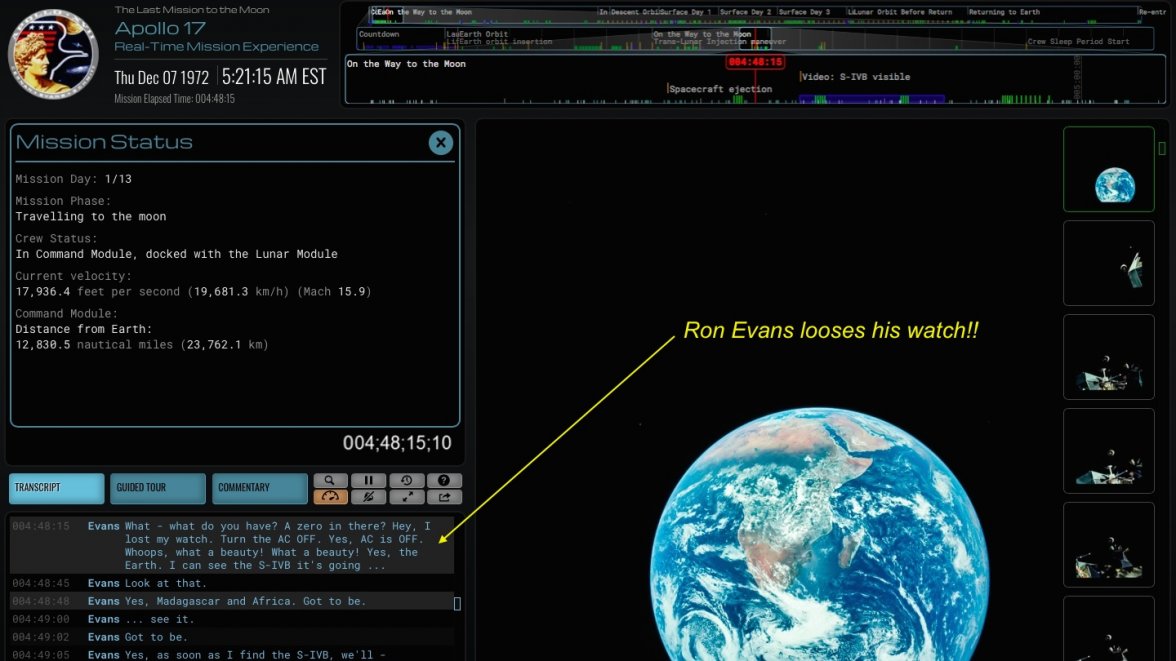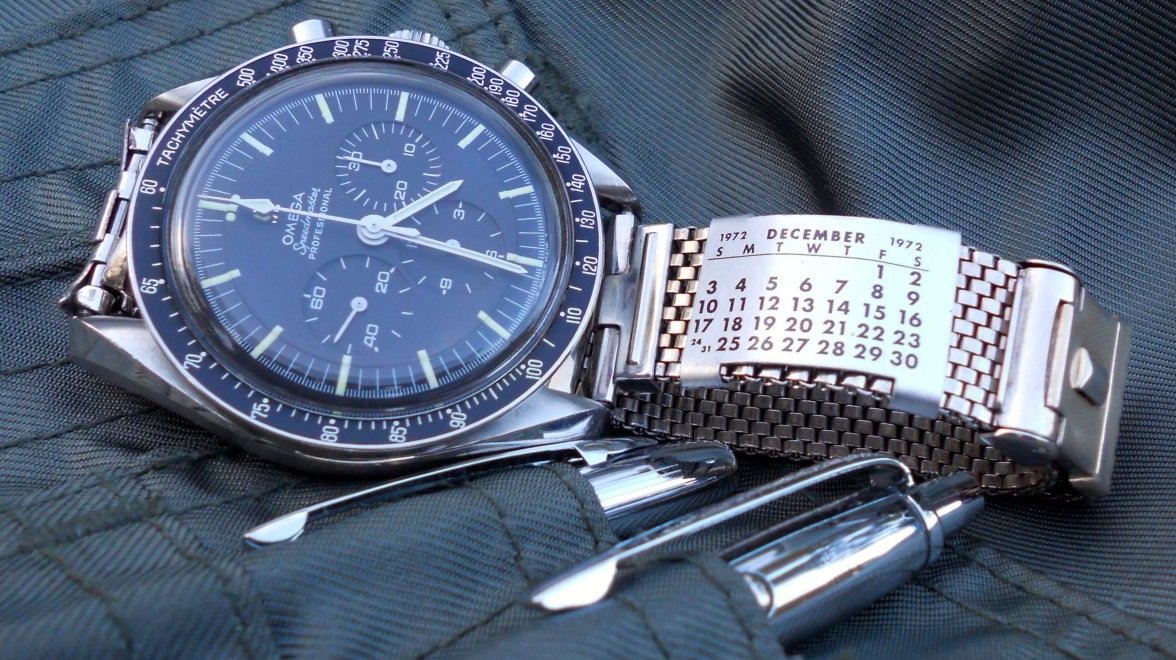TLIGuy
·Just a little over 5 hours ago 45 years ago today Apollo 17 launched on the final mission to the Moon.
For any Apollo 17 fans, here is a fantastic website where you can check in and join the mission as it happen to the second with audio, photos, and videos for the next 13 days.
To experience the mission as it happen click here Join the Apollo 17 mission and join the mission by clicking the NOW button at the top right.
As I was checking in this morning Ron Evans had just lost his watch 12,830 miles from Earth.

Ron may have lost his but I still have mine.

TLIGuy signing out...
For any Apollo 17 fans, here is a fantastic website where you can check in and join the mission as it happen to the second with audio, photos, and videos for the next 13 days.
To experience the mission as it happen click here Join the Apollo 17 mission and join the mission by clicking the NOW button at the top right.
As I was checking in this morning Ron Evans had just lost his watch 12,830 miles from Earth.

Ron may have lost his but I still have mine.

TLIGuy signing out...
Edited:
